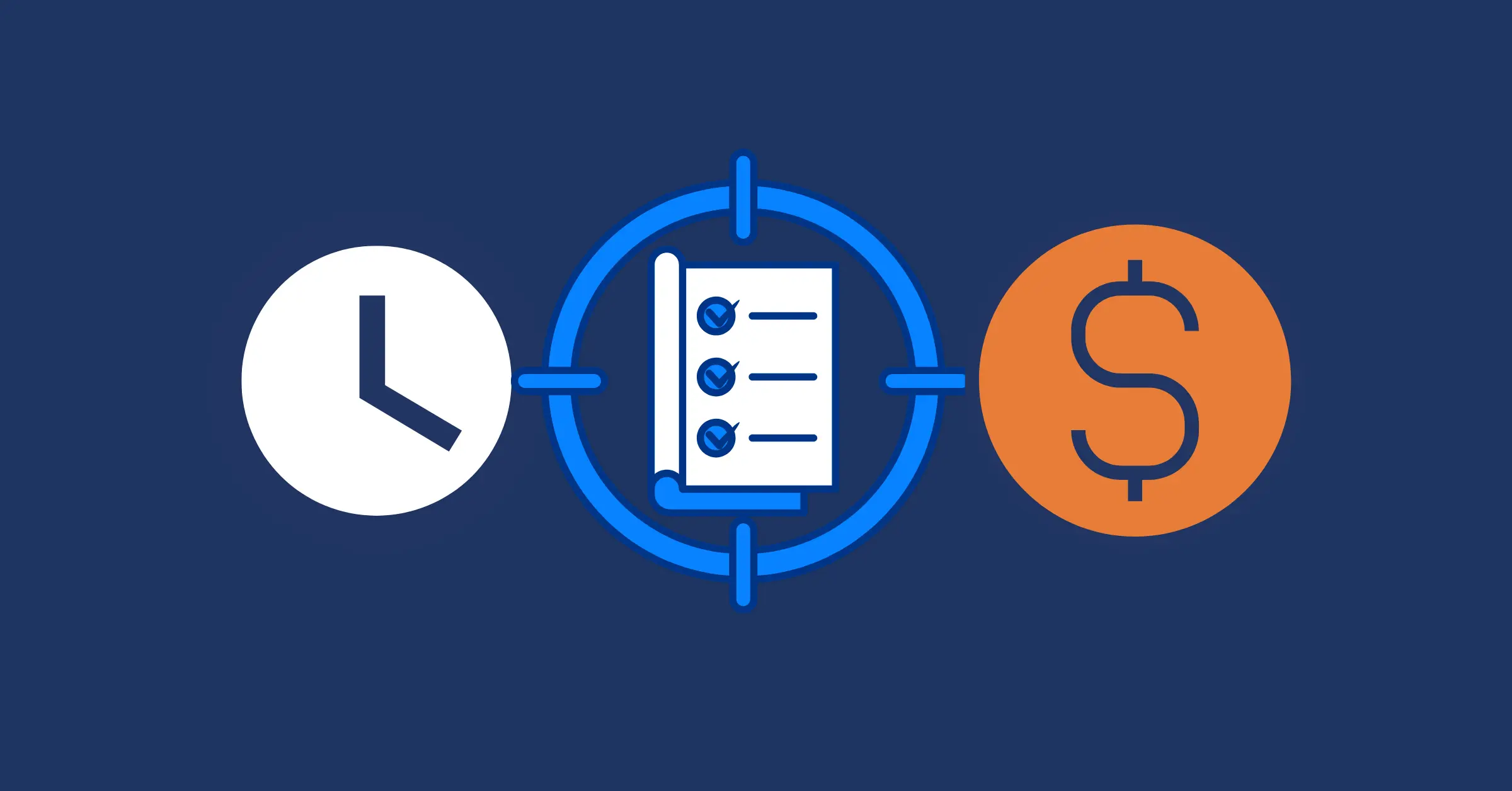What is a Work Breakdown Structure (WBS) in Project Management? Definition, Key Elements & Types
Learn what a Work Breakdown Structure (WBS) is, its key elements, types, and why it’s vital for managing projects effectively.
Managing a project can be challenging, especially when juggling multiple tasks, deadlines, and team members. That's why project managers need a Work Breakdown Structure (WBS) to manage their projects efficiently. A WBS helps project managers break down complex projects into smaller, more manageable parts, making it easier to plan, track progress, and keep everything on schedule. By structuring work into a clear hierarchy, teams can improve resource allocation, collaboration, and risk management.
In this guide, we’ll explore what a Work Breakdown Structure is, why it’s important, its key elements, and the different types of WBS charts. If you're new to project management, check out our Project Management Guide for a solid foundation before diving in.
What is a Work Breakdown Structure (WBS)?
A Work Breakdown Structure (WBS) is a hierarchical framework used in project management to break down a project into smaller, more manageable components. According to the Project Management Institute (PMI), a Work Breakdown Structure (WBS) is defined as a “deliverable-oriented hierarchical decomposition of the work to be executed by the project team to accomplish the project objectives and create the required deliverables”.
In simpler terms, a WBS breaks down a project into progressively smaller tasks, each level of the WBS represents a more detailed view of the project work. The primary goal of WBS is to simplify project planning and execution, ensuring that every task is clearly defined and accounted for.
Key Elements of Work Breakdown Structure (WBS)
A Work Breakdown Structure (WBS) is more than just a list of tasks - it’s a structured framework that ensures every part of a project is accounted for. To create an effective WBS, certain key elements must be in place. These elements help maintain clarity, organization, and efficiency throughout the project lifecycle.
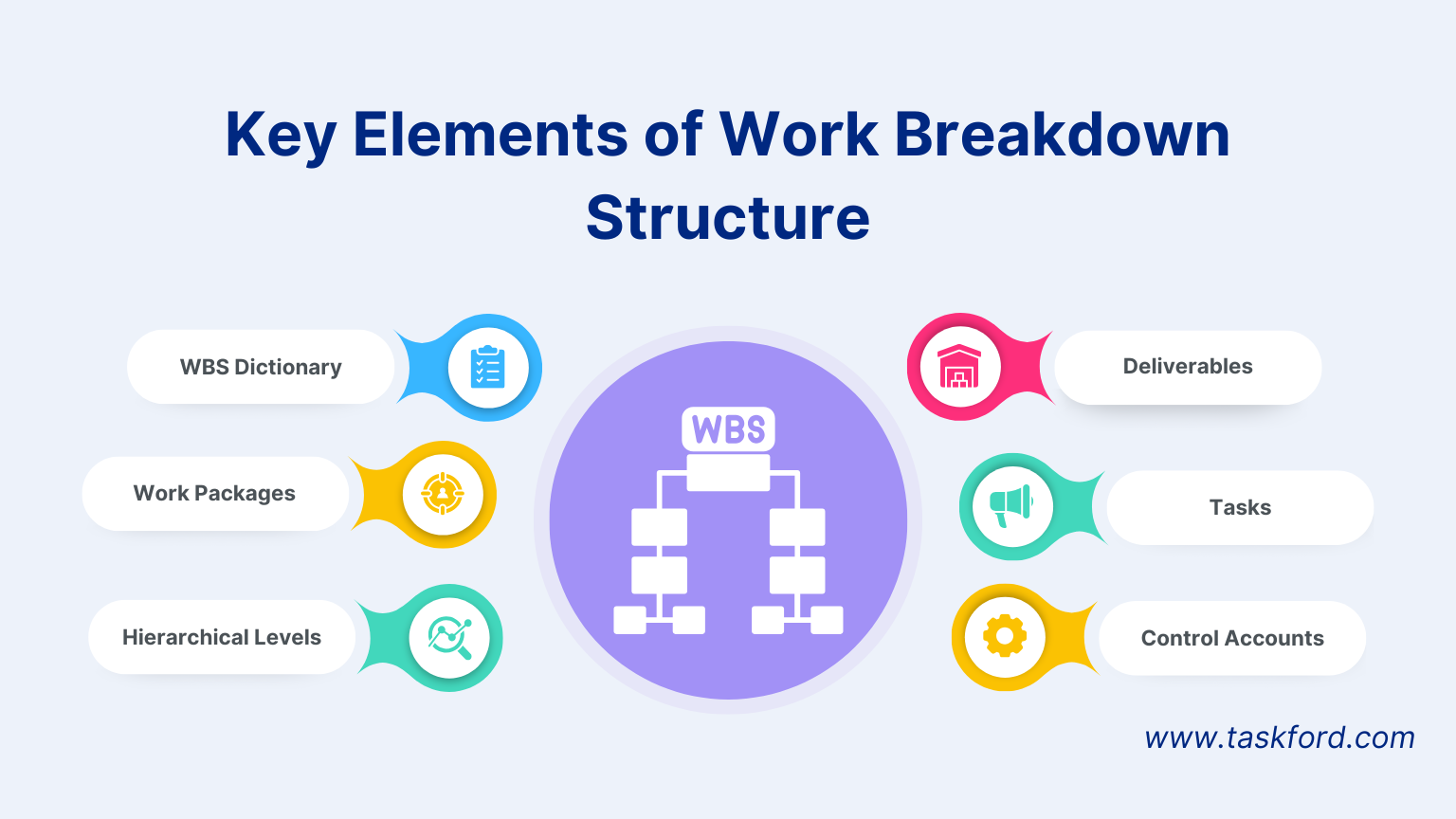
1. WBS Dictionary
A WBS Dictionary is a document that provides detailed definitions for the various elements within a Work Breakdown Structure (WBS). It is a critical component of the WBS, as it helps project participants and stakeholders clearly understand the terminology used in the structure. The WBS Dictionary ensures consistency and eliminates ambiguity by providing clear descriptions of each WBS element, including specific requirements, deliverables, and scope for each task or work package. This document acts as a reference for everyone involved in the project, ensuring everyone is on the same page regarding what each element entails.
2. Work Packages
Work packages are the lowest level of the WBS hierarchy and represent the specific tasks or work units that must be completed to achieve the project objectives. Each work package should be small enough to be manageable but large enough to represent a meaningful piece of work. These packages are assigned to responsible team members or departments for execution.
Work packages are crucial because they:
- Define the scope of work for each task.
- Make task assignments clear, ensuring accountability.
- Enable the estimation of time, costs, and resources for each specific task.
3. Hierarchical Levels
A key feature of the WBS is its hierarchical structure. The WBS breaks down the project into several levels, starting with the project goal at the top and breaking it down into progressively smaller components. Each level of the hierarchy represents a greater level of detail.
- Level 1: The top level represents the entire project, typically defined by its objectives or deliverables.
- Level 2 and beyond: These levels represent major components or phases of the project, which are further broken down into smaller work packages at lower levels.
This hierarchy ensures that every aspect of the project is accounted for and helps project managers maintain a clear overview of the work from start to finish.
4. Deliverables
Each task or component in the WBS corresponds to a deliverable, which is a tangible or intangible outcome that must be completed as part of the project. Deliverables are the specific results or products that are created throughout the project and are essential for project success.
For example, in a construction project, a deliverable might be the completion of the foundation or the completion of the building's framework. Each deliverable has associated tasks that, when completed, contribute to the overall project's success.
5. Tasks
Tasks are the individual activities or units of work that make up a work package and, in turn, define the overall project scope. Each task within the WBS has its own set of requirements, status, descriptions, task owners, dependencies, and duration. By breaking down a project into specific tasks, project managers gain a clearer understanding of the project scope and can better manage time, resources, and dependencies. Tasks are essential for tracking progress, managing resources, and ensuring that all components of the project are completed on time.
6. Control Accounts
Control Accounts are a key element in managing and tracking project progress. They group related work packages, making it easier to monitor performance, control costs, and measure progress. Control accounts help project managers track the status of larger segments of the project, known as control accounts, which may span across multiple deliverables or phases. For instance, in the execution phase of a project, there might be a control account that consolidates several related work packages, helping managers oversee a broad scope of the project more effectively.
Types of Work Breakdown Structure (WBS)
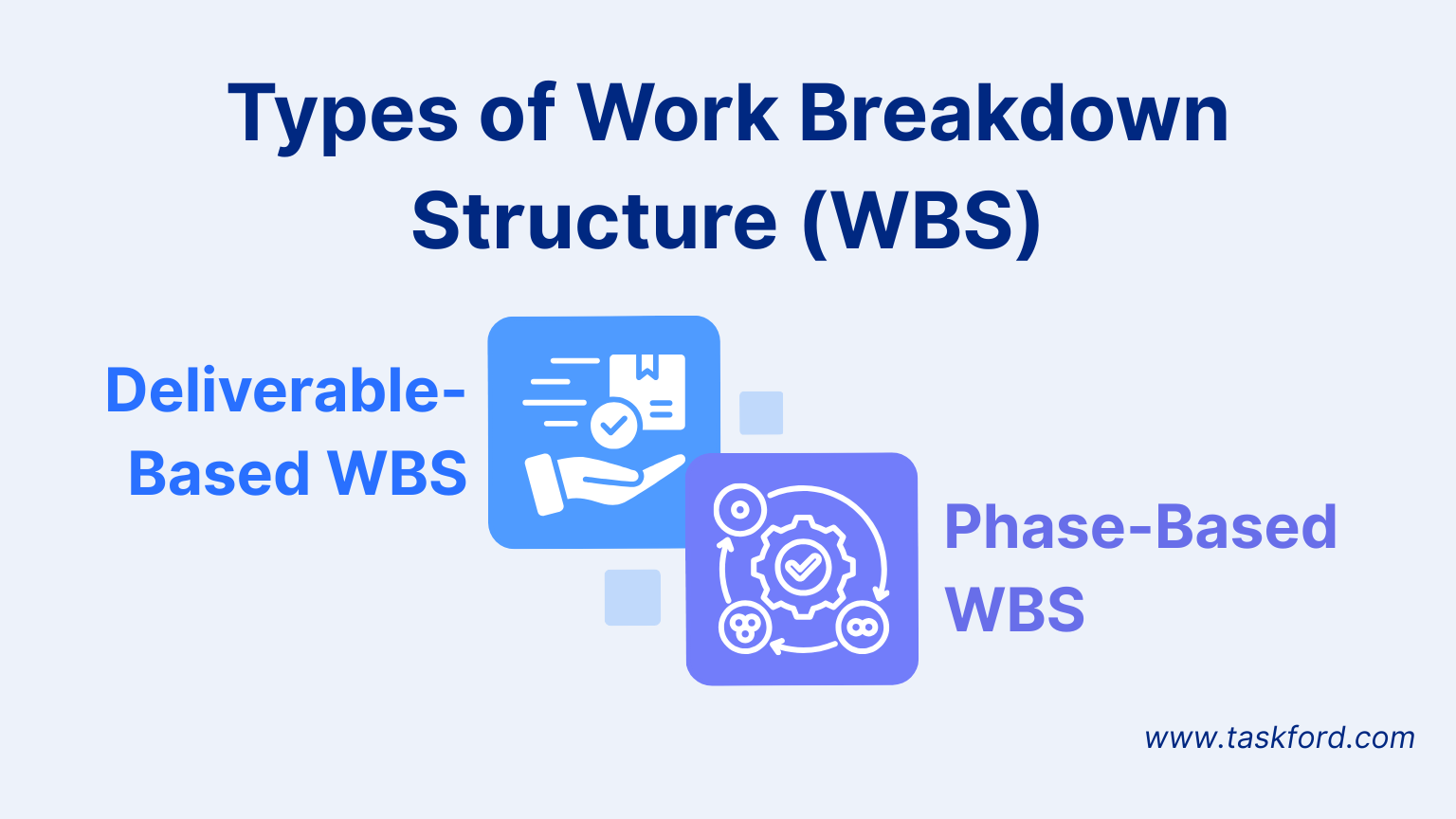
A Work Breakdown Structure (WBS) can be categorized into different types based on how the project work is structured and decomposed. The choice of WBS type depends on the project’s nature, objectives, and deliverables. Below are the main types of WBS used in project management:
1. Deliverable-Based WBS
A Deliverable-Based WBS structures the project by breaking it down into major deliverables and sub-deliverables. Each level represents a specific outcome or product, ensuring that all project work contributes directly to the final deliverables.
Example: In a software development project, a deliverable-based WBS might include:
- Level 1: Software Development Project
- Level 2: Functional Modules (e.g., User Authentication, Payment System)
- Level 3: Individual Features (e.g., Login Page, Password Reset Function)
This type of WBS is widely used in industries like construction, IT, and product development.
2. Phase-Based WBS
A Phase-Based WBS (or process-based WBS) structures the project based on its lifecycle phases, rather than specific deliverables. Each phase consists of tasks required to complete that stage before moving to the next.
Example: For a construction project**,** a phase-based WBS might include:
- Level 1: Construction Project
- Level 2: Project Phases (e.g., Planning, Design, Procurement, Execution)
- Level 3: Tasks within Each Phase (e.g., Site Survey, Blueprint Approval, Material Purchase)
This type of WBS is common in industries with structured workflows, such as construction and manufacturing.
Why is a Work Breakdown Structure Important in Project Management?
A Work Breakdown Structure (WBS) is crucial in project management because it provides a clear framework for organizing and managing the entire project. WBS helps project managers and teams effectively plan, execute, and track their work. Here are some key reasons why a WBS is essential in project management:
- Enhanced Organization – A WBS systematically structures work into smaller, focused tasks, making it easier to manage and ensuring nothing is overlooked.
- Better Task Management – Clear objectives, timelines, and deliverables for each task simplify assignment and tracking, helping teams identify bottlenecks early.
- Defined Deliverables – Each task represents a specific outcome, reducing ambiguity and improving team alignment.
- Efficient Resource Allocation – By detailing task requirements, project managers can assign personnel, tools, and budgets effectively.
- Stronger Risk Management – Identifying dependencies and breaking tasks down helps anticipate and mitigate potential risks.
- Improved Communication – The hierarchical structure clarifies roles and responsibilities, enhancing team collaboration and stakeholder reporting.
- Better Cost Control – Assigning budgets to smaller work packages enables accurate cost estimation and financial oversight.
- Supports Scheduling – Clearly defined tasks help project managers create realistic timelines, track progress, and avoid delays.
Common Types of Work Breakdown Structure Charts
A Work Breakdown Structure (WBS) can be visually represented in different ways, depending on the project type and management approach. The right WBS chart helps teams clearly see how work is divided and structured. Below are the most common types of WBS charts used in project management:
1. Hierarchical WBS Chart (Tree Diagram)
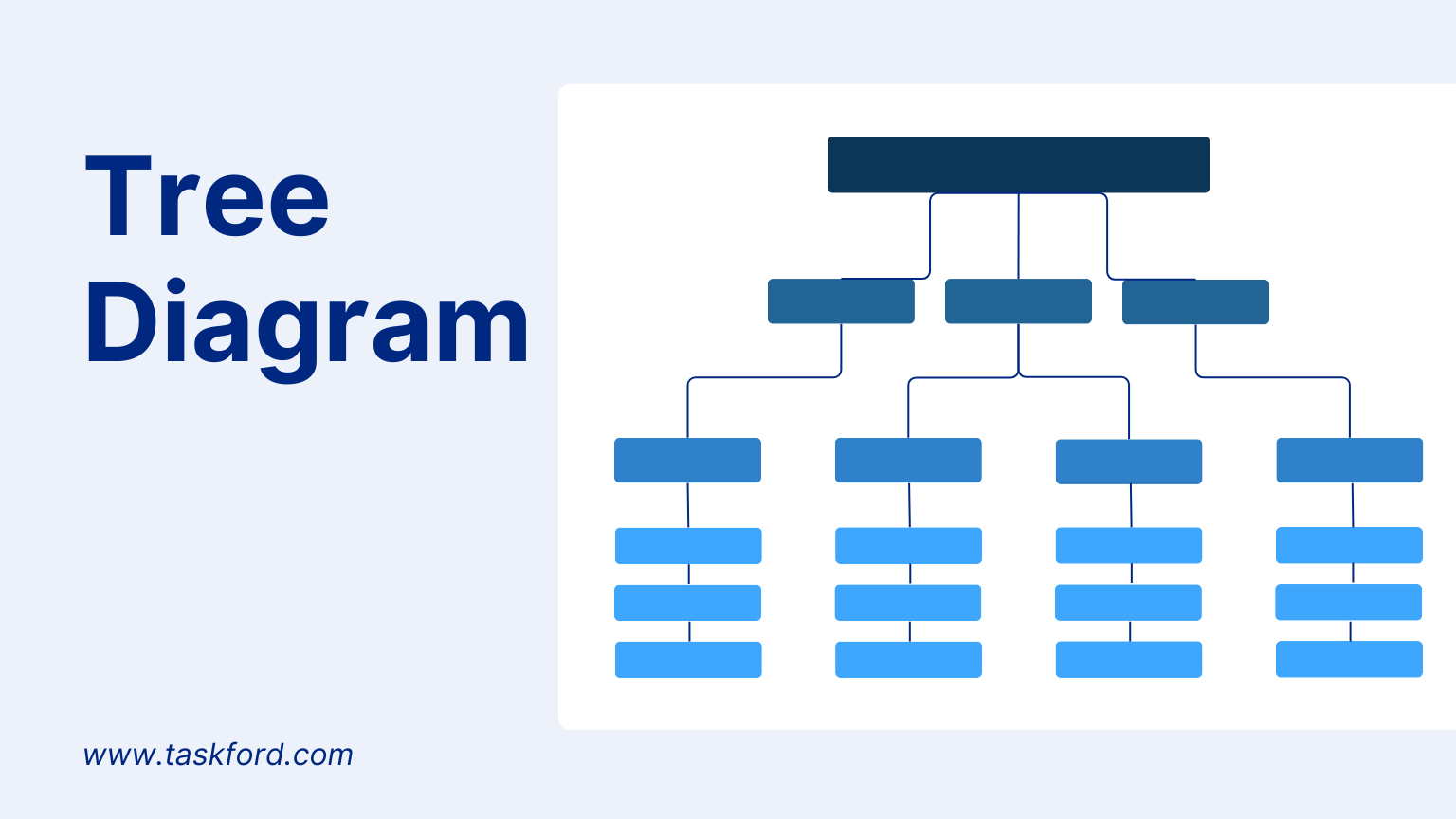
A Hierarchical WBS Chart is the most traditional and widely used format, displayed as a tree diagram where the project is broken down into multiple levels. The top level represents the overall project, while subsequent levels break down the work into phases, deliverables, and individual tasks.
Best For:
- Construction projects
- Software development
- Traditional project management
2. Tabular WBS Chart
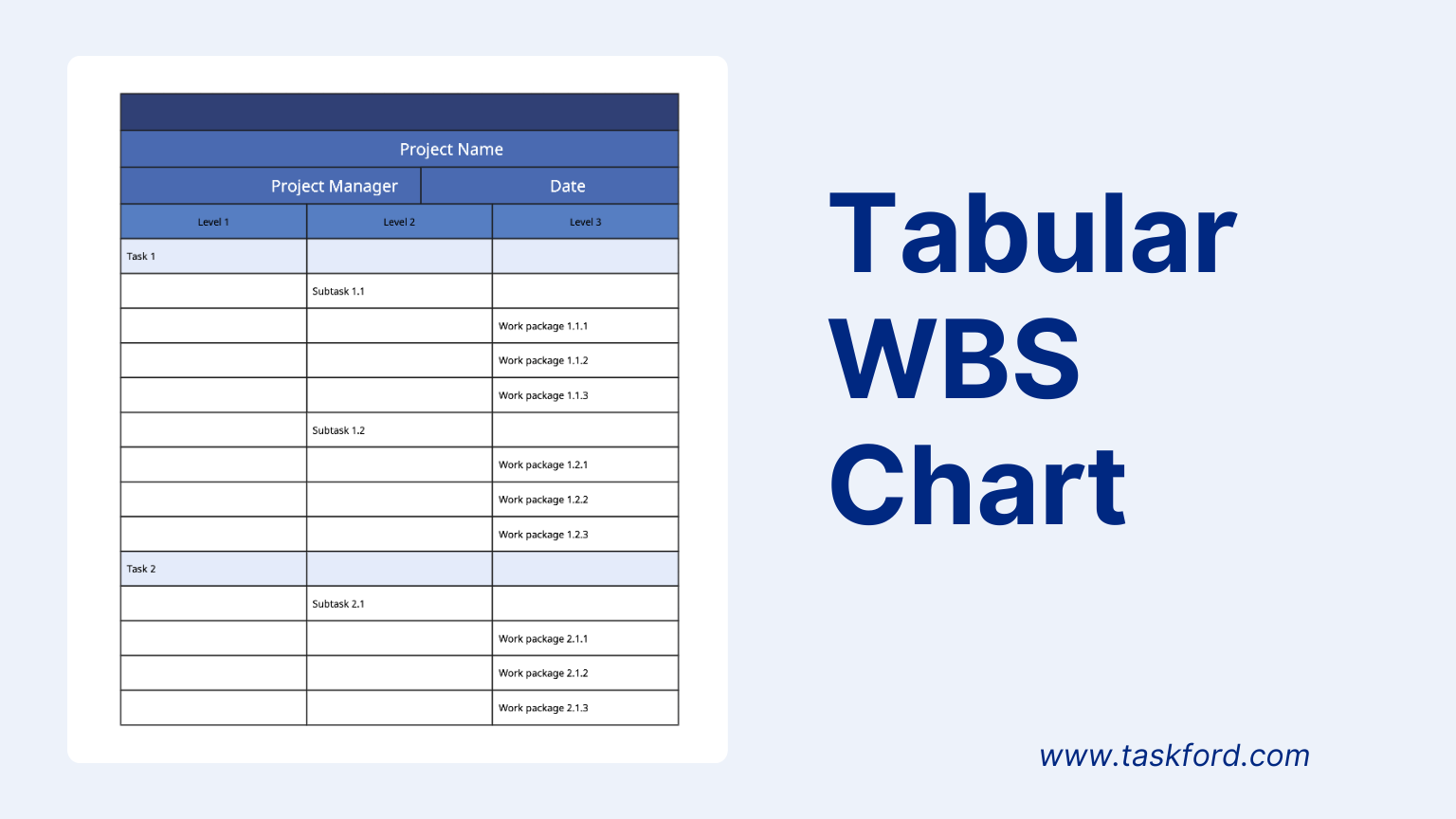
A Tabular WBS Chart presents the WBS in a table format, making it easy to track responsibilities, deadlines, and dependencies. It typically includes columns for task ID, task name, responsible team member, start and end dates, and dependencies.
Best For:
- Formal project documentation
- Managing WBS in spreadsheets (Excel, Google Sheets)
3. Gantt Chart-Based WBS
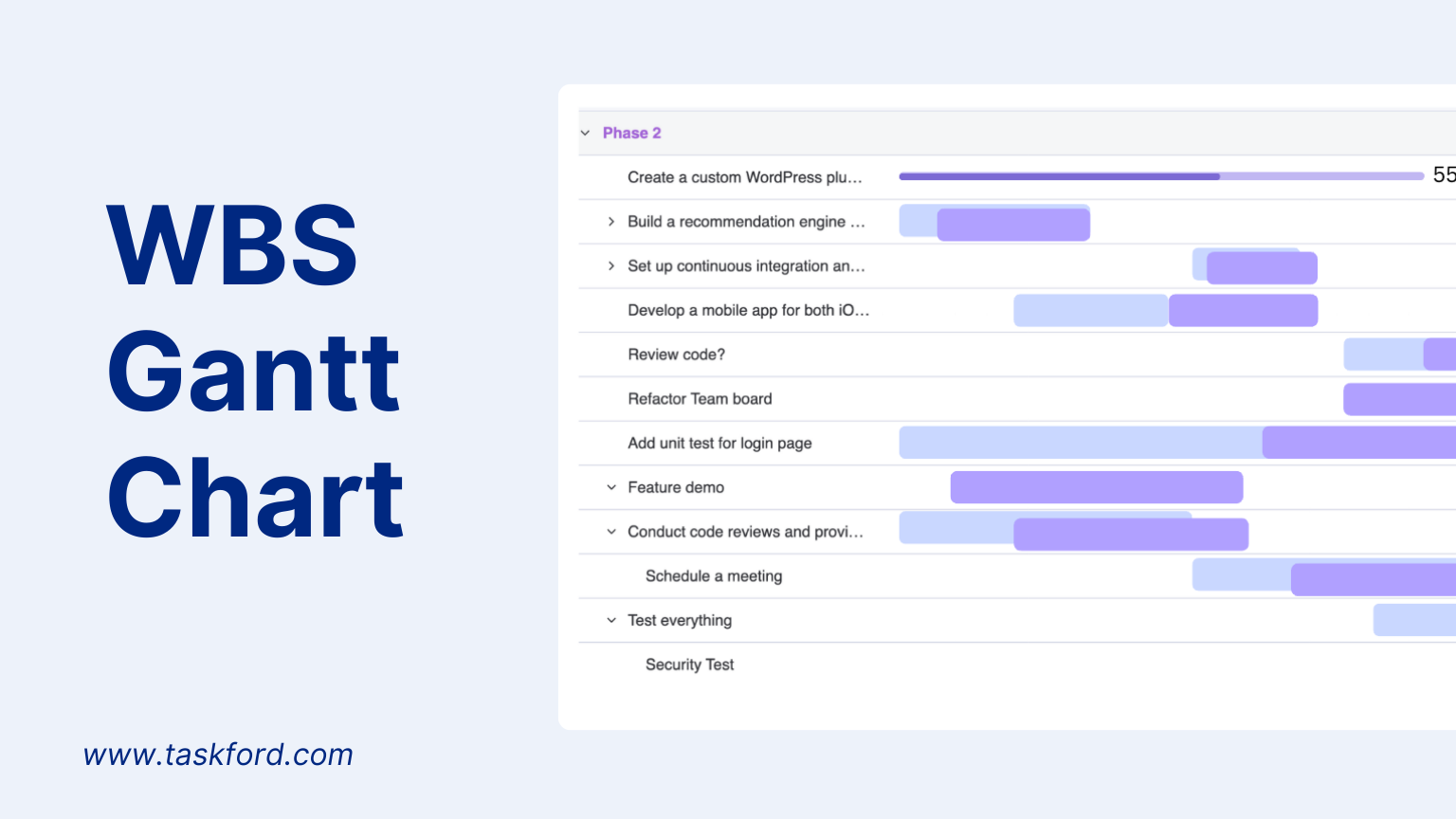
A WBS Gantt chart integrates the WBS with a timeline, allowing teams to visualize tasks along a project schedule. This format helps track dependencies, task durations, and overall project progress.
Best For:
- Time-sensitive projects
- Agile & waterfall project management
Conclusion
In conclusion, a Work Breakdown Structure (WBS) is an indispensable tool in project management that transforms complex projects into manageable, well-organized components. By breaking down a project into a hierarchical framework of tasks, deliverables, and work packages, a WBS enhances planning, execution, and tracking, ensuring that every aspect of the project is clearly defined and accounted for.
Want to elevate your project management game? Explore TaskFord’s project management feature today to visualize timelines, manage dependencies, and keep your projects on track - sign up for early access now and see the difference for yourself!
Making work simpler,
smarter, and more connected
Join our waitlist and be notified first.

Subscribe for Expert Tips
Unlock expert insights and stay ahead with TaskFord. Sign up now to receive valuable tips, strategies, and updates directly in your inbox.






